Salix L.
willow
Salicaceae
mainly temperatetemperate:
(adj) of the climatic zone between boreal and tropical
 regions in the northern hemisphere
regions in the northern hemisphere
At least 61 species and accepted hybrids plus numerous cultivated hybrids and varieties
worldwide
known to be a significant weed in some countries
terrestrialterrestrial:
(adj) growing on land as opposed to living in water
 to amphibiousamphibious:
to amphibiousamphibious:
(adj) of a plant able to live on land or in water
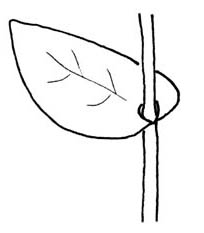 , or occasionally inundated shrubs or trees
, or occasionally inundated shrubs or trees
Clones sometimes formed by rhizomes; rhizomes branching sympodially. Leaves alternatealternate:
(adj) (of leaves) bearing one leaf per node; placed singly on the stem at different heights
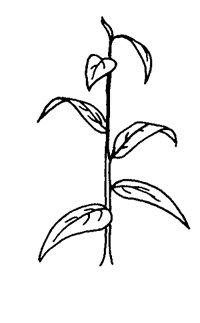 , rarely oppositeopposite:
, rarely oppositeopposite:
(adj) (of leaves) two leaves per node; in pairs on opposite sides of an axis
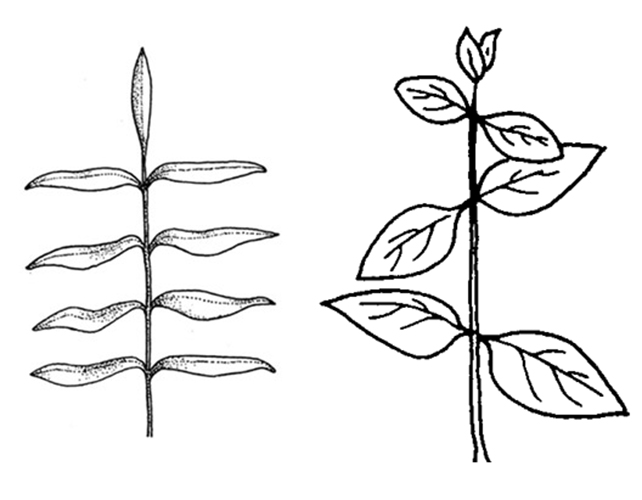 , deciduousdeciduous:
, deciduousdeciduous:
(adj) shedding of parts at the end of their growing period, as with leaves; those trees or shrubs that drop their leaves at the end of the season
 or marcescentmarcescent:
or marcescentmarcescent:
(adj) withering but not falling off
 , petiolatepetiolate:
, petiolatepetiolate:
(adj) relating to or in the form of a petiole; bearing petioles
 , often stipulate; leaf bladeblade:
, often stipulate; leaf bladeblade:
(n) (syn. lamina) the flat, expanded part of a leaf, frond, or petal (excluding, e.g., the petiole)
 variously shaped, typically linear; margins entireentire:
variously shaped, typically linear; margins entireentire:
(adj) having a continuous margin that is not toothed or lobed
 to toothed, often glandular. Catkins appearing before, with or after the leaves, sessilesessile:
to toothed, often glandular. Catkins appearing before, with or after the leaves, sessilesessile:
(adj) attached directly, without a stalk
 or on terminating branchlets, erect or spreading, rarely pendulous; each flower subtended by 1 floral bractbract:
or on terminating branchlets, erect or spreading, rarely pendulous; each flower subtended by 1 floral bractbract:
(n) a modified leaf near a flower or inflorescence, often reduced, sometimes large and/or petaloid; also glumes, lemmas, and paleae of grass spikelets
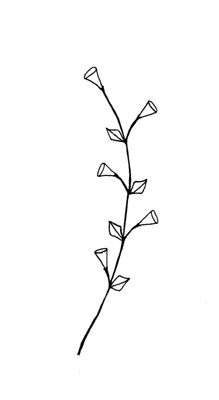 . Perianthperianth:
. Perianthperianth:
(n) collective term for the calyx and corolla of a flower; also used for floral whorl(s) in which the calyx and corolla cannot be resolved; any of the leaves or bracts surrounding the sex organs of bryophytes
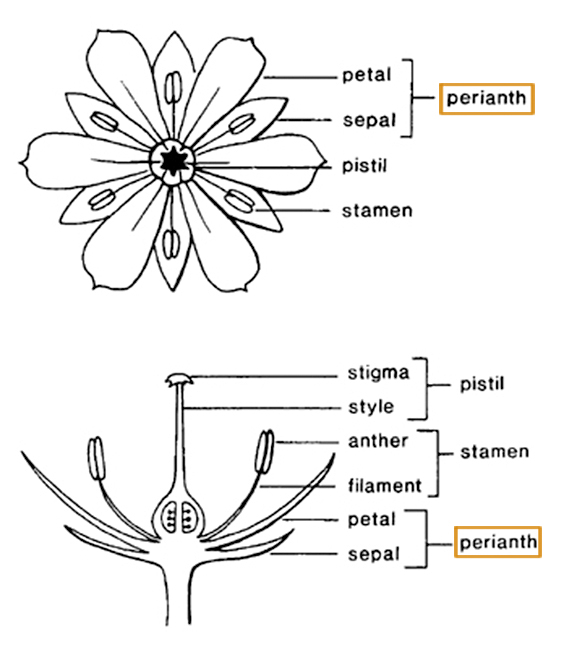 reduced to glands: 1 adaxialadaxial:
reduced to glands: 1 adaxialadaxial:
(adj) pertaining to the side facing toward the axis, as in the upper surface of a leaf
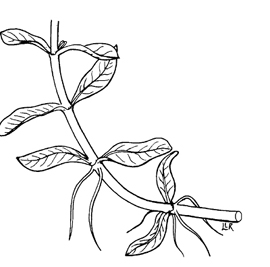 and 1 abaxialabaxial:
and 1 abaxialabaxial:
(adj) the side facing away from the axis, as in the underside of a leaf
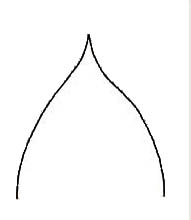 or absent; male flower stamens 2 to many, filaments free or united; female flower sessilesessile:
or absent; male flower stamens 2 to many, filaments free or united; female flower sessilesessile:
(adj) attached directly, without a stalk
 or stipitatestipitate:
or stipitatestipitate:
(adj) borne on a stipe or stalk
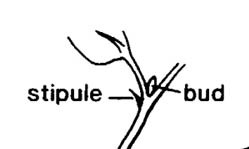 , bladeblade:
, bladeblade:
(n) (syn. lamina) the flat, expanded part of a leaf, frond, or petal (excluding, e.g., the petiole)
 , sometimes bifurcatebifurcate:
, sometimes bifurcatebifurcate:
(adj) split into two
 , stigmasstigma:
, stigmasstigma:
(n) the portion of the pistil that is receptive to pollen
2, entireentire:
(adj) having a continuous margin that is not toothed or lobed
 or each 2-lobed.
or each 2-lobed.
permanently or seasonally wet, inundated or waterlogged sites; channels, ditches, riparianriparian:
(adj) growing by rivers or streams; of, adjacent to, or living on, the banks of a river, lake, pond, etc.
 zones (creeks, springs, rivers, streams, ponds, lagoons, lakes), wetlands (fens, bogs, marshes, swamps), wet meadows, floodplains, wet tundra, and snowbeds
zones (creeks, springs, rivers, streams, ponds, lagoons, lakes), wetlands (fens, bogs, marshes, swamps), wet meadows, floodplains, wet tundra, and snowbeds
Salix is a large genus containing over 550 species and hybrids. Members of this genus are highly variable and there are many hybrids, making it difficult to identify particular species.